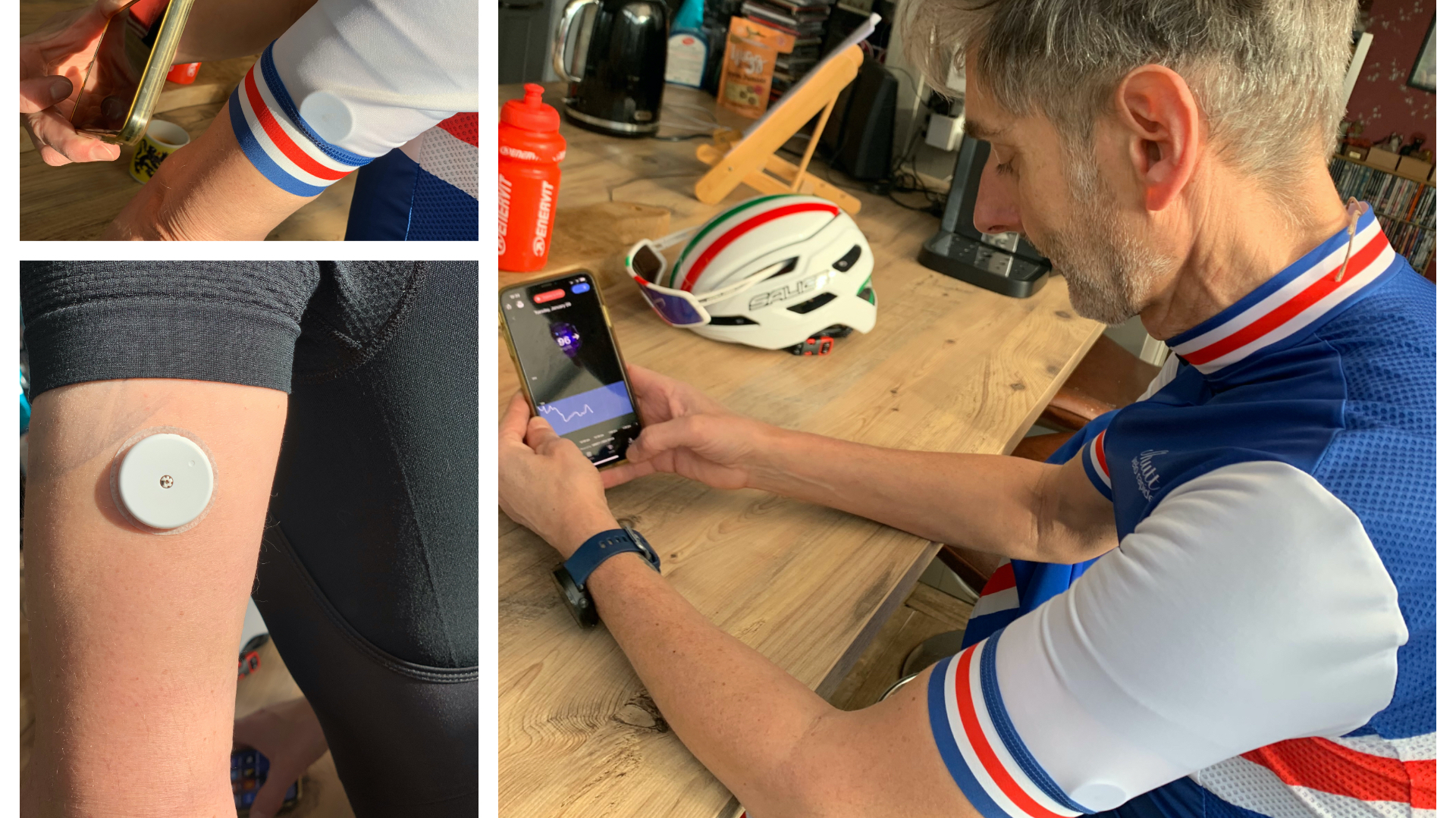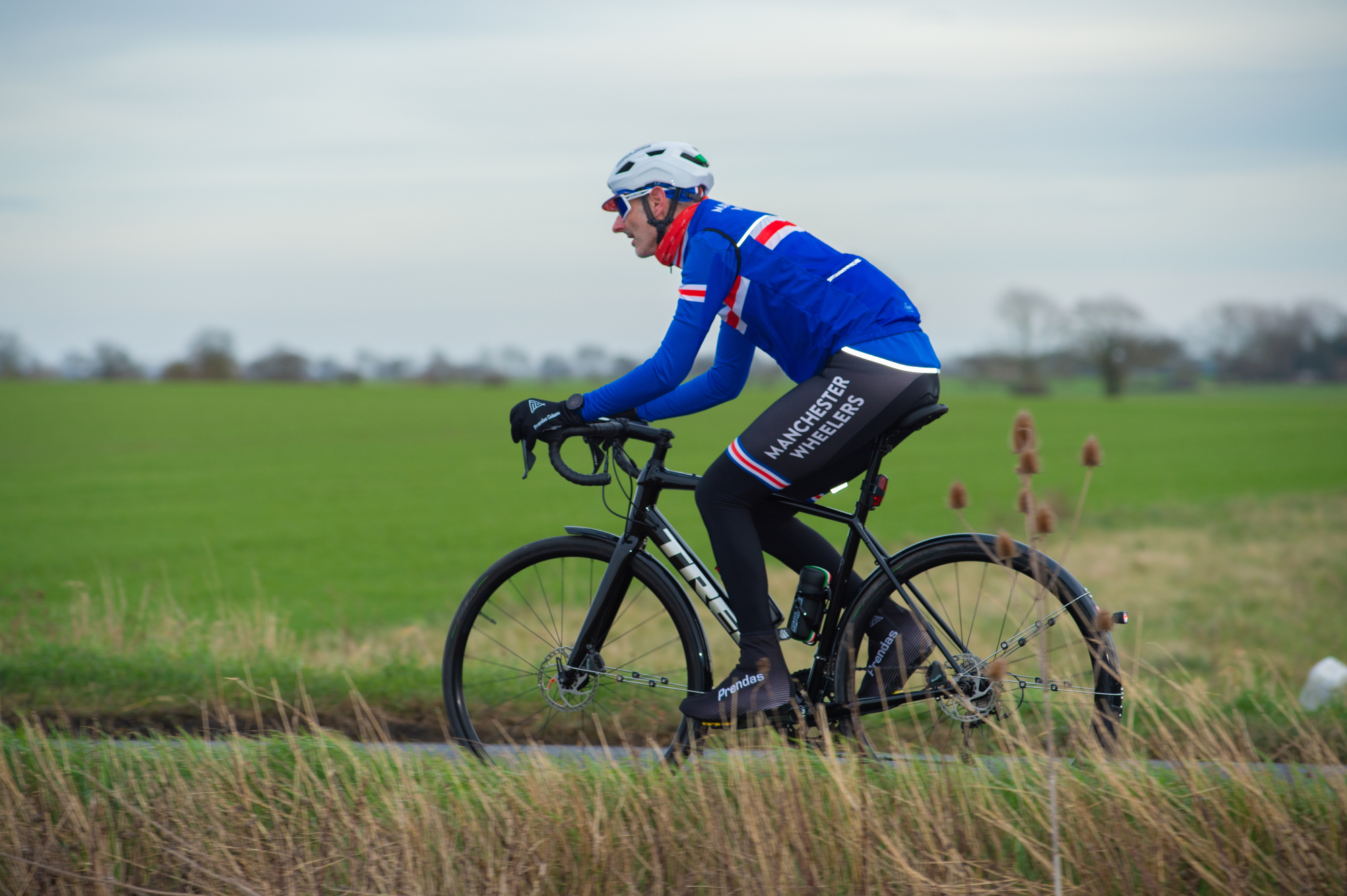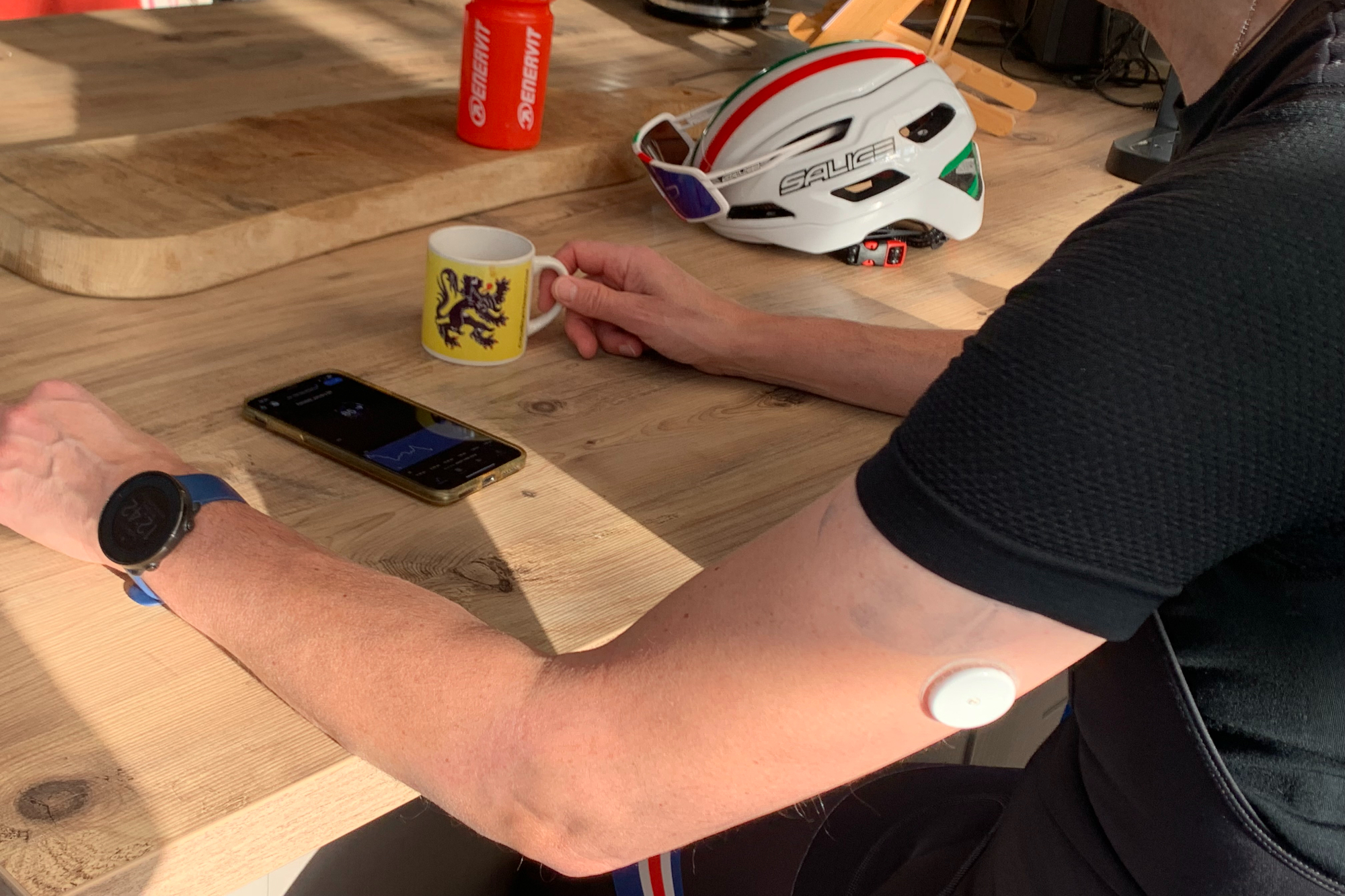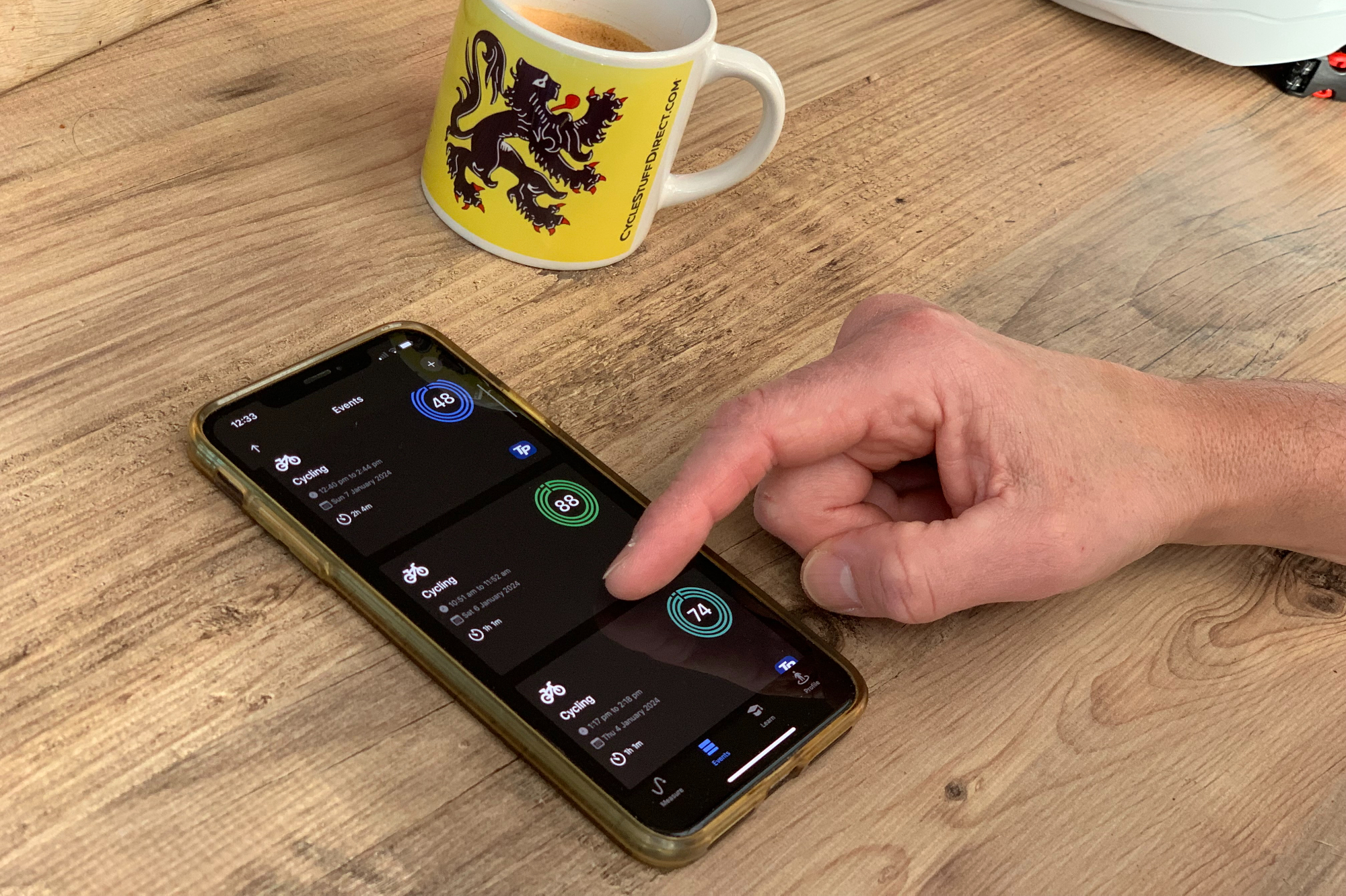
Every Sunday my post-ride routine involves ringing my family. Almost invariably, it goes something like this: *Phone rings and is eventually answered*
Me: “Hi there, it’s Adam…”
My dad (Putting on the voice of someone with a very heavy cold): “Dullo, Dumber One…”
He has done this for years and, for him, the joke never wears thin. Ever.
The reason for this ritual, and why he never does it with my younger siblings, is that I am highly susceptible to colds and sinus infections, especially since I took up cycling again a decade ago following a horse-riding accident.
In 2018, following a trip to see the Ronde van Vlaanderen, I developed flu and lost a stone (6.3kg) in just a week. After that, the merest thought of getting wet and/or cold would trigger panic. In fact, a year later while taking part in the annual Cat and Fiddle Challenge I threw an Olympic-level toddler tantrum when it began to rain. Climbing Axe Edge in the deluge, I could see the brackish run-off from the fields streaming down the road. Passing a sodden Highland cow, I caught its gaze which seemed to say "I know what you’re getting". Indeed, by the time I reached the finish at Rourke’s Cycles in Stoke I could feel the inevitable heavy cold already developing.

Despite my GP’s advice – take paracetamol and drink water – and my grandmother’s; “Give up, you’re too old” – nothing seemed to work and the colds kept coming. I adopted an even healthier dietary regime and began taking handfuls of supplements but still the comedy voice from my dad...
So, could the appliance of science, or more to the point, a Supersapiens device help me fend off the effects of a depleted immune system?
Albeit that it was ostensibly designed to monitor glucose levels in diabetics, I wondered if it could help me and fellow regular cold sufferers better manage my physical health and well-being.
Supersapiens set-up
The sensor itself contains a 5mm needle which, although I don’t have a fear of per se, I did think may merit rather more expert help than me or my wife trying to plug into me. Thankfully, my neighbour is a theatre nurse and very adeptly assisted. The process was indeed quick and totally painless.

Within an hour the sensor began to live stream data to the corresponding Supersapiens app on my phone, with an ever-changing graph charting my fluctuating blood glucose (BG) levels, which varied depending on things such as eating, drinking and of course, exercise. Each monitoring device lasts precisely two weeks, so in the first part of my experiment, I decided to see what Supersapiens could tell me about a more ‘relaxed’ lifestyle in the run-up to Christmas, followed by a return to more structured training and careful eating.
David Lipman, Supersapiens Director of Applied Science and Content, is also an Australian-trained medical doctor, podiatrist, exercise physiologist and runner, and immediately identified where some of my issues may lie. Possibly being underweight (I’m 6ft/1.82m tall and weigh 10 stone/63.5kg) and underfuelling, while trying to sustain a high training volume will have a deleterious effect, he suggests.
“Supersapiens can help to address this,” he assures. “You have to appreciate that weight is non-linear and that lighter is not necessarily faster. You’re a carbon-based being, not a car. Most endurance athletes are under-fuelling and I can see from your data that you have fairly low glucose.”
What he then said took me aback: “You should almost double the amount of protein you’re currently eating.” Lipman says that “glucose is the currency our body uses for carbohydrates” and even riding at zone 2 level have a carbohydrate cost. Moreover, trying to maintain a Pogacar-like physique through a long British winter also comes with pitfalls, as Lipman observes: “Low body fat doesn’t help dealing with the elements. Muscle and fat help deal with the cold and wet. You can get very cold rolling down a hill. So, before, during and after exercise intake, intake, intake! That’s my rule.”
He adds: “Under-fuelling can be a real problem, from stress fractures to hormonal problems. So, it’s pretty low-hanging fruit if you take on more protein.”
During our conversation, Lipman also revealed that he could see when my glucose levels had been spiking “late into the evening”. Shamed, I resolved to ease back on the ‘recovery’ Duvels in future.
What did it tell me and what did I learn?
Admittedly, I like the idea of tech but am not very adept at using it. To say the least. As the days progressed, the Supersapiens app would chide me for not logging in after 24 hours. After several such notifications, I began to feel that I was living out a cycling version of 2001: A Space Odyssey, with me as Dr Dave Bowman and the Supersapiens app playing HAL.
Yes, Supersapiens has gone to great lengths to make the app really user-friendly, backed up by helpful videos online and regular email updates offering further advice and support, but the prompts to log back in and check my glucose levels began to remind me of Whoop’s TV adverts featuring superstars Mathieu van der Poel and Ceylin del Carmen Alvarado, with the slightly passive-aggressive strapline ‘The Best Obsess’.
This set a hare running in my head: with so many new devices coming to the market first with elite teams and athletes and then to the wider public, where would all this encouragement to monitor yourself end up? For sure, top performers sweat all the available details and the pros have experts to further support them but just how many devices and apps are necessary for your ‘average’ amateur?

Dr Chris McManus, Lecturer in the School of Sports Rehabilitation and Exercise Sciences and Director of the Human Performance Unit (HPU) at the University of Essex, says that the burgeoning number of wearable devices are often on sale before their scientific claims have been rigorously tested and proved.
“As a scientist, I would want to validate particular claims. I understand that companies are looking for a USP [unique selling poin] but we do need strong evidence to back up what they say. There is value in measuring ourselves as recreational athletes and certainly understanding your glucose levels can help. The Supersapiens device, for example, could be a valuable training tool for reinforcing what you’re currently doing (as part of your training and dietary regime) or inform a different approach.”
He continues: “From a performance perspective, depletion of glycogen is when fatigue hits. So, feeding and maintaining glycogen is essential for performance. Carbohydrates are key, so if your body needs carbs, keep feeding it. The Supersapiens device has great potential to inform your fuelling strategy before competition. However, blood glucose is only a small percentage of the overall picture and when we deplete glycogen, for example during a time trial when your body is oxidising carbohydrates at quite a rate, a limiting factor is how much glycogen can be transferred from your gut into your blood. That absorption rate is important. Regardless of your glucose levels, you should still aim to maximise carbohydrates. So, it’s all well and good monitoring glucose but allowing your glycogen to deplete is what affects your performance.”
Another key factor that Dr McManus points out is that wearable devices do not give guidance, such as what to eat and when. Another potential flaw he points out, is their variability: “Blood glucose response is not exact. You could eat the same meal on different days and the response will differ. This is because so many things influence it. From hydration to hormone responses. So many variables can affect what the data shows.”
Due to the very nature of its origins, the Supersapiens device only monitors blood glucose levels. This is just one aspect of what sports scientists and elite-level athletes analyse today. For example, blood lactate measurement can help to understand and improve an individual’s fatigue management.
Dr McManus acknowledges that the plethora of monitoring devices from the likes of Wahoo, Garmin, Whoop and Supersapiens all represent an exciting area of potential for athletes of all stripes, but that more research into their validity as effective training tools is needed. “Is it all a current fad?” he ponders. “They each have a use and application but look at the cost/benefit ratio. If you don’t have a specific medical need to monitor a part of your physiology, why do so? What’s more, there isn’t a single unifying device that informs all your needs as yet.” Sounding a further note of caution, he adds: “Of course, there is also a danger of creating a negative influence by monitoring obsessively. Yes, there is a link between carbohydrate intake and immune function but ‘colourful plates’ as part of a well-balanced diet will be far more effective.”
Is there another way to stay healthy?
Ah yes, the cost. At £150 per month, using Supersapiens could add an extra £1,800 a year to your budget. Former world pursuit champion, ex-pro, DS, now coach and co-owner of Champion Cycling Services Colin Sturgess is somewhat phlegmatic when I ask him if it should become part of a keen racer’s set-up. “Yes, if you can afford it. The thing is, cycling’s like an arms race nowadays, the more you throw at it, the better you’ll get and the more you’ll get from it. However, I do believe that a lot of these devices are purely cynical marketing and exploit the uninformed. If I’m not sleeping well, I know this. Some of these things simply reinforce the negative and will something on my wrist tell me how to improve my sleep?”
While Sturgess acknowledges that athletes with a legitimate need to monitor blood glucose levels would directly benefit from devices such as the Supersapiens, for others it won’t: “For you, me, the guys I train with, it will only create doubt, stress and pressure. I don’t think any of that is necessary for the benefits given. As a competitor, yes you need stress and pressure but they have to be positive.” As a worst-case scenario, he even believes that a reliance on monitoring devices could lead to eating disorders.
Instead, Sturgess suggests a number of old school, zero-tech ideas to help me stave off the dreaded lurgy.
First up, handlebars. In particular, bar tape. “If you think about the everyday contact points of your bike, you rarely touch the pedals and saddle with your hands. But your levers and bar tape you touch every time you ride. During which you’re sweating, picking up crap off the road, wiping your nose and occasionally stopping for a wee. After every single ride, use an alcohol wipe to clean your tape and levers. I even take baby wipes and hand gel with me because you’re going to be touching all manner of things when you stop at a café. Limit your transfer of germs. It’s something I try to instil in all my riders.”
Another part of the bike that can be a major source of bugs, is your bottle: “Bidons! Don’t keep using them ad nauseam. Replace them. They’re biodegradable and affordable, so there’s no need to hang onto them forever.”
Sturgess also recommends removing them from the bike after each ride, putting a squirt of Milton baby bottle cleaner in and then washing after a good soak.
He also sees kit bags as a source of potential illness. “I’ve seen riders pull gels out of the bottom of their bag, where they keep their helmets and shoes...”
In the era of Strava, Sturgess is aware of youngsters’ enthusiasm to show their commitment: “They’re super-keen to get out but if the weather isn’t great, adjust your schedule. At 8am on a winter’s day it might be 4°C but at 9am it could be 8°C. I’m not really a fan of the phrase, but ‘marginal gains’ and all that. Those little increments will make a big difference. It’s the simple things; when you’re training hard and riding in less-than-ideal conditions, your immune system will be suppressed. Be mindful of that.”
With early spring training camps increasingly popular among amateur riders, Sturgess has more valuable advice for those fortunate enough to be jetting off to warmer climes: “Gary Sutton used to tell us ‘Never travel tired and don’t train the day before you fly’. That’s stuck with me for years and years. Otherwise, you can pick up all sorts of things. So, wash your hands when travelling. If you forget, that’s when the trouble starts.”
Did it work for me?
When the second Supersapiens monitor expired after its fortnight lifespan, I confess I didn’t really miss it or the colour-coded glucose scores after each training session. To be fair, something less data specific and more responsive, in terms of advice, would have been far more helpful for a technophobe like me. That’s why Colin Sturgess’s words of wisdom had far more impact on me; to such an extent that the cold I’ve been carrying since October finally feels like it is beginning to shift.
At the beginning of January, the Consumer Electronic Show (CES) showcased some of the very latest smart tech, including an AI (artificial intelligence) pillow and toothbrush. It strikes me that health monitoring devices cannot be far off. When they do arrive, everything available right now could be rendered obsolete. After all, if we’re willing to subject ourselves to a coach telling us how to train, when and how long for, surely a piece of tech that not only monitors every aspect of your health and reacts accordingly, telling you what to do is going to be part of the great leap forward. Well, until the UCI bans it.







